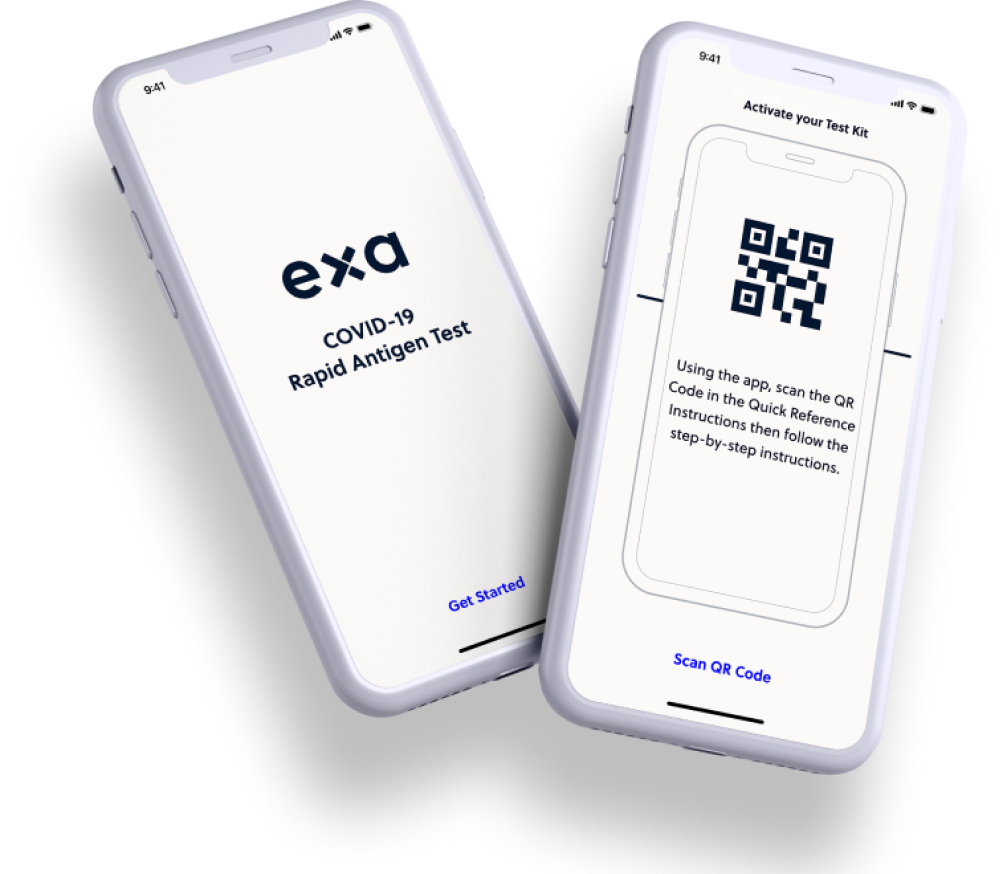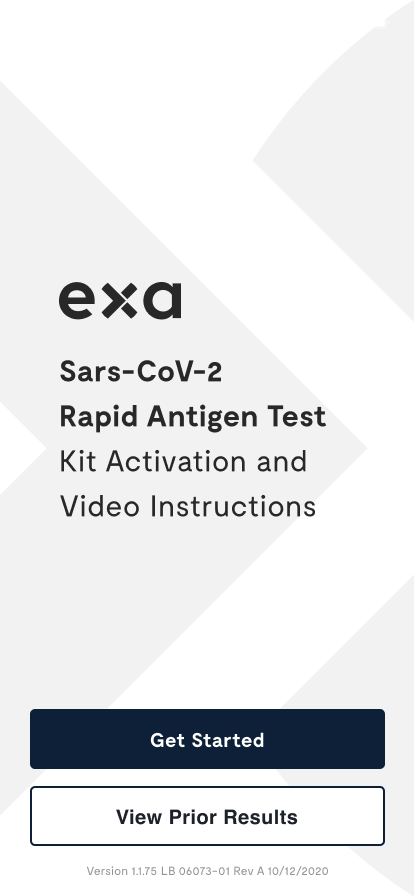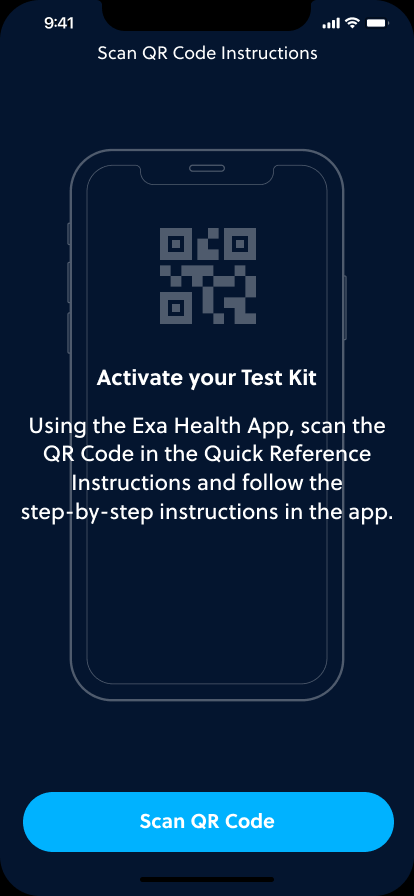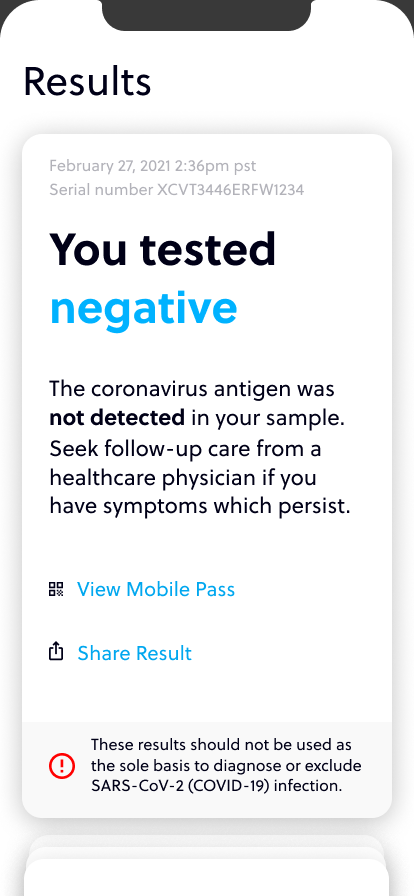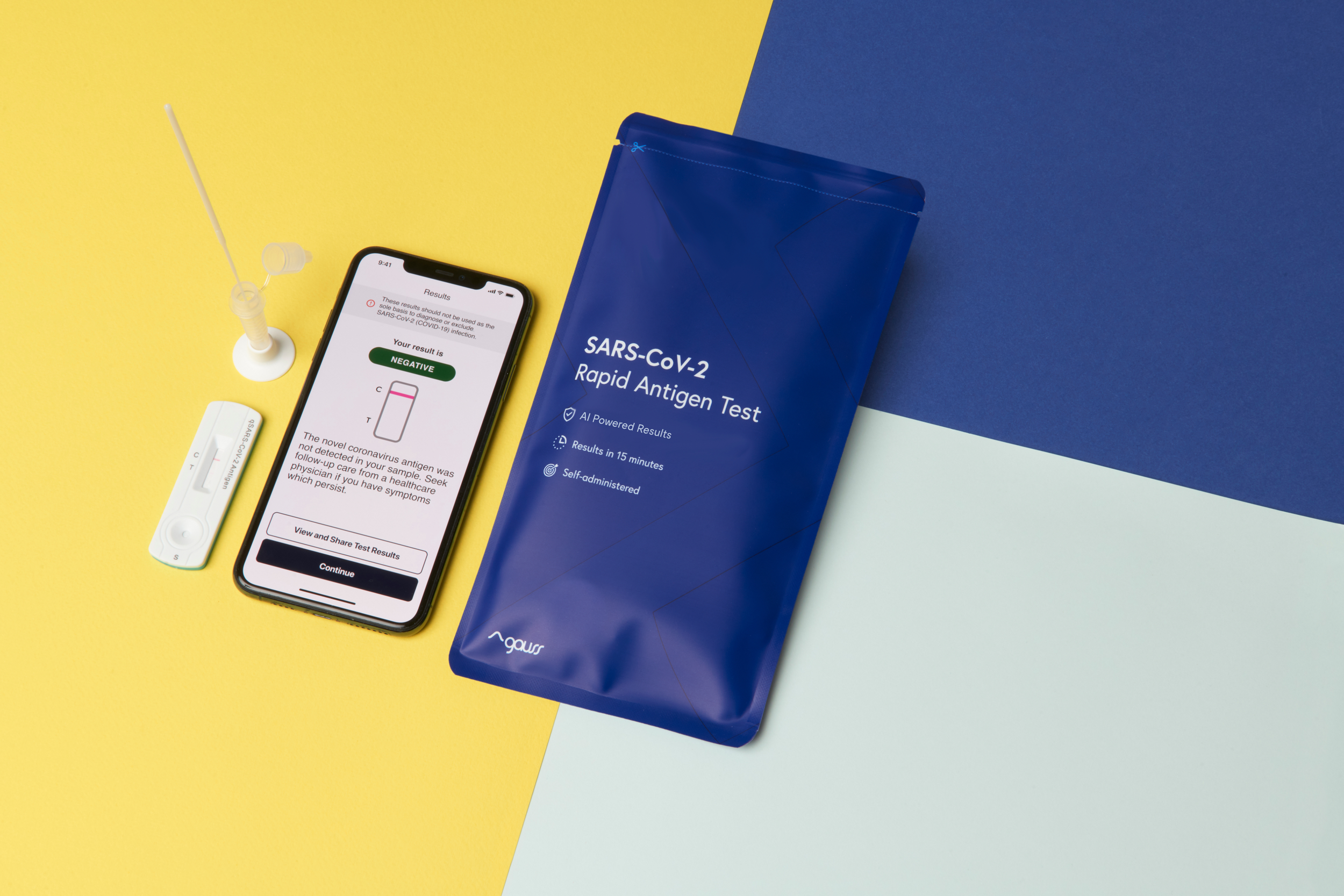
Exa Health
COVID-19 Test Kit
Role
Product Designer, UX Researcher
Tool
Figma
The COVID-19 application worked with a rapid antigen test kit to walk a customer through completion of the test. Using AI and computer vision, the app could verify and save a customer’s COVID-19 test result in app for any business or travel requirements.
Objective
During the height of COVID-19 in 2020, Gauss Surgical pivoted to an antigen test to help verify COVID statuses of customers. At this time COVID tests were administered at onsite locations and CDC requirements were constantly changing.
We wanted to reach the market quickly with a rapid test that was available to the common consumer with detailed instructions on collecting a good nasal swab sample to receive accurate results at home. This meant developing a lightweight app to quickly test with users and rapidly iterate for an EUA submission.
Initial Designs
Based on the manufacturer’s instructions for use and the incorporation of CDC guidelines, I quickly designed and worked with our engineers to created a lightweight native iOS app flow initially to guide a user through the rapid antigen test.
Delta Usability Test
I wanted to make sure we were getting user feedback early on, and decided to take our lightweight app into a moderated usability test to iterate rapidly for our EUA submission. Working with three other researchers we found from our initial research test:
Users had difficulties activating their test kit
Users had difficulties swabbing their nostril to collect a good nasal sample based on specific CDC instructions
Users were unsure of what to do with the test kit after completion
Round-table sessions
After conducting the delta study, I facilitated a round table workshop with our product manager, engineers, clinical team, and leadership to refine the app to address these user pain points. From our ideation session, we worked through our customer journey, refined the user flow, and incorporated any ideas we could gather from the team that would enhance the user experience.
To address the user’s pain points, we implemented:
Simplify the kit materials to easily find the app in the app store using a QR code and activate the kit
Incorporate AI/ML and computer vision to help assist with nasal swabbing and scanning the test cassette to receive accurate results
Save the antigen test results in a mobile pass to share with an employer or provider
App refinement & Usability Testing
After refining the user flow, I redesigned the screens to incorporate the ideas that were generated in the round table workshop to address the user pain points we uncovered in the delta study.
The new inclusions were brought to a 125 participant usability test for EUA submission. The update to the app included included:
QR code scanning for app registration
Implementation of AI/ML and computer vision to help assist with nasal swab accuracy and test cassette scanning
In-app video instructions
Mobile pass to save results
Results & Handoff
Through our iterations and additions to the flow we achieved over a 90% success rate on all critical tasks and edge cases. There was an accuracy improvement on nasal swab collection and users found the instructions easy to follow and intuitive.
In Figma, I developed a component library, use descriptions and screen annotations for the foundation of a design system to build upon in collaboration with a front-end developer.
I don’t believe the test kit and app launched publicly, and I left the company before last submission for EUA approval.

